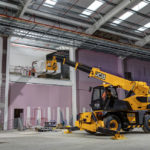Construction Plant News attends the international launch of the latest innovations from JCB.
With more than 330 products currently in its portfolio you might think that JCB already has every class of construction plant covered, but it is testament to the ingenuity of its R&D department that new concepts are consistently emerging. Indeed, last year alone the Staffordshire manufacturing giant delivered 25 new lines to its agricultural and construction customers, and these will be joined by at least 35 in the course of 2019.
That new equipment is entering a market that has witnessed global growth on an unprecedented scale with – for the first time in a calendar year – over a million units sold worldwide. Whilst that rate of record expansion is unlikely to be sustained, with the demands of major infrastructure projects, and a continued political focus on the residential housebuilding sector, the UK will maintain its own position as Europe’s largest market for construction equipment for the foreseeable.
 Of course, it’s not just about scale, but how projects are delivered, and the latter is equally experiencing unparalleled change. The way we build determines what machinery we buy, and the construction plant landscape on these shores diverges in key classes of equipment from our European neighbours as a consequence. The rotary telehandler is a case in point, in that it has hitherto been far more common on the continent than in the UK. With the rise of modular construction, however, where prefabricated components are craned into position, JCB’s Hydraload 555-210R rotating telescopic handler is a timely introduction.
Of course, it’s not just about scale, but how projects are delivered, and the latter is equally experiencing unparalleled change. The way we build determines what machinery we buy, and the construction plant landscape on these shores diverges in key classes of equipment from our European neighbours as a consequence. The rotary telehandler is a case in point, in that it has hitherto been far more common on the continent than in the UK. With the rise of modular construction, however, where prefabricated components are craned into position, JCB’s Hydraload 555-210R rotating telescopic handler is a timely introduction.
This 5.5 tonne, 20.5m lift height unit has the versatility to replace smaller mobile cranes, or aerial work platforms, and JCB is offering pallet forks, a 5.5 tonne carriage winch, a 2 tonne x 2m jib winch, a reduced height jib, 5.5 tonne hook, light duty buckets and a range of fork-mounted accessories, such as waste skips and concrete placing skips. Remote lift end operation and access platforms will also be offered.
To ensure that set-up time is minimised, the outriggers have Auto one-touch deployment, stowage and levelling. Competitive lift end cycle times and high auxiliary flow rates for efficient winch work, boost productivity further. With a lower chassis engine layout, the machine offers excellent access and class-leading serviceability. A low, clean boom design gives excellent all-round visibility, augmented by comprehensive work light options and camera kits, including a boom head camera for precise placement at height.
The machines are powered by JCB’s proven highly efficient Ecomax engines, offering a high degree of parts and service commonality with other Loadall models. The JCB LiveLink telematics system is fitted as standard and will incorporate features that enable operators to fully exploit the performance of this versatile machine.
With a maximum lift capacity of 5.5 tonnes, the machine offers excellent highly competitive load charts. Easily selectable lift end speed profiles and lift envelope limits help the operator to optimise the machine for specific tasks. A range of specially developed JCB attachments using RFID technology can be identified by the machine, to automatically offer the correct load chart for safe operation.
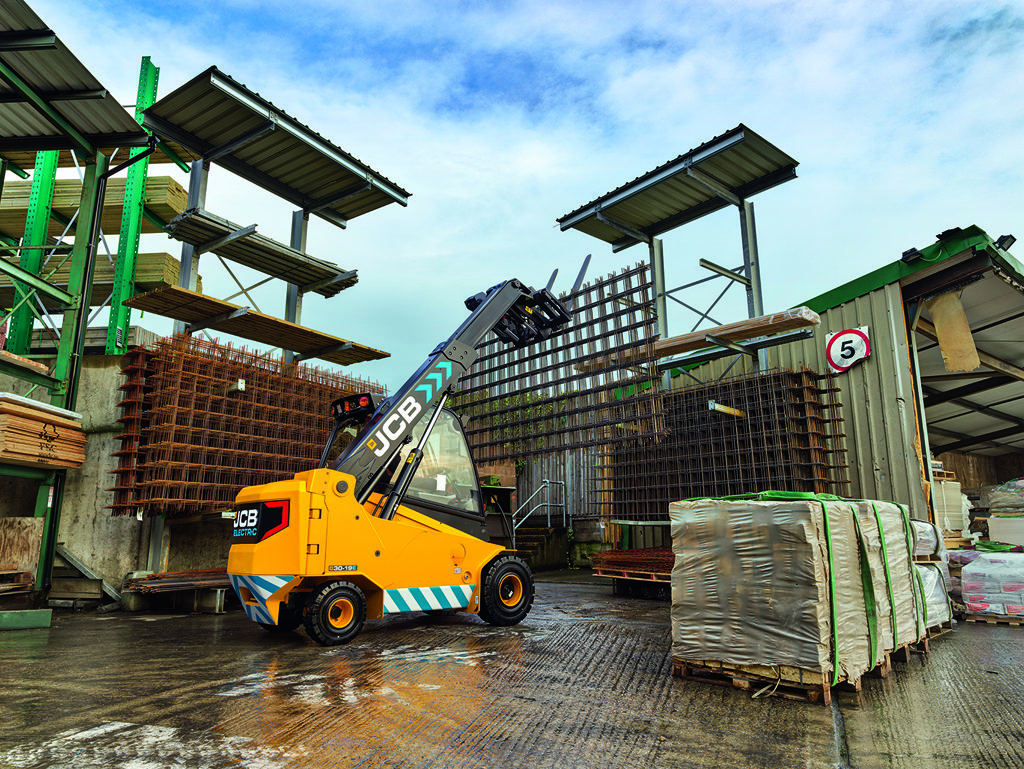
The great movement for change of our age is, of course, sustainability and it is driving a demand for alternative powertrains. JCB is now leading the charge in lithium ion technology with its electric mini excavator, a full review of which can be found in this issue on page XXX. Elsewhere the introduction of a fully electric Teletruk will herald a new era of zero carbon solutions in materials handling. As the world’s only telescopic lift truck, on its launch in October 1997 it was itself an industry first. Offering the benefit of substantial forward reach, a curtain-sided trailer could be loaded and unloaded from just one side, whilst long wheelbase vans can also easily be loaded with pallets via the rear doors.
The new electric-powered JCB 30-19E can be utilised indoors and outside, challenging a forklift market where almost 250,000 units are sold worldwide. It is quiet in operation, produces zero emissions and the 80-volt lead acid battery can power a full eight hour shift on a single charge.
Clearly we are all on a journey that includes an electric avenue, but clean diesel will remain the most common destination, and that’s why the demands of legislation has led to enormous levels of investment in recent years. The manufacturer’s latest engines, for example, will use a combination of a diesel oxidation catalyst (DOC), integrated diesel particulates filter (DPF) and selective catalytic reduction (SCR) to meet European Stage V emissions regulations. Stage V demands even greater reductions in particulate matter, and will apply to a broader range of power outputs than ever before, and JCB has achieved the standard without any changes to engine canopies, which means there’s no need to redesign a machine and no impact on visibility for the operator.
JCB’s three litre Dieselmax engine is rated at 55kW with a class-leading maximum torque of 440Nm. It powers JCB’s backhoe loaders, Loadall telescopic handlers and other mid-range machines. It features a compact after-treatment system comprising JCB’s particulate control technology and auto-stop which shuts down the engine after a period of idling to minimise fuel consumption.
The Stage V version of the 4.8-litre EcoMAX engine, which powers the Loadall telescopic handlers, mid-range wheeled loading shovels and the larger TM telescopic wheeled loaders, produces 81-129kW (108-174hp) and boasts peak torque outputs from 516Nm to 690Nm.
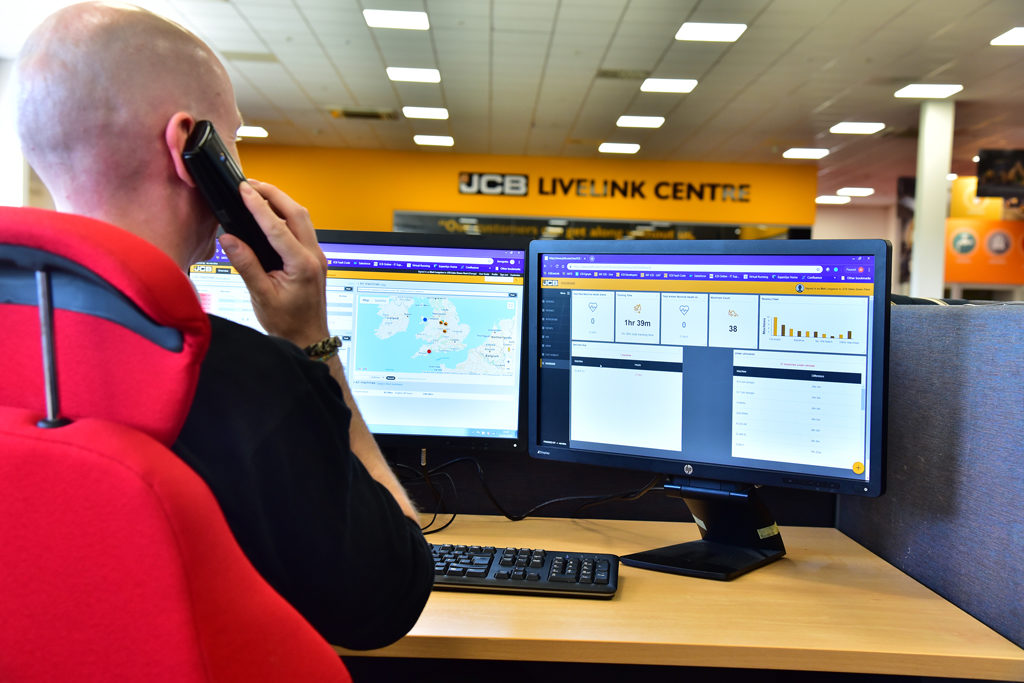
If sustainability is one engine of change then connectivity is certainly another, and JCB recently celebrated a landmark with over 250,000 of its machines now being monitored by its LiveLink Telematics system. New features for 2019 include LiveLink Fleet, which enables fleet operators to monitor vital information such as fuel consumption, faults and machine idle time to improve profitability as well as hit sustainability and environmental targets by monitoring carbon emissions. The JCB Operator app can be linked to LiveLink Fleet, and allows daily checks and inspection documents to be recorded and submitted digitally as well as storing useful manuals.
All JCB machines fitted with LiveLink can also be tracked from its Uptime Centres. Launched in 2010 the Uptime Centres bring together JCB’s dedicated parts and technical specialists to ensure machines work at their most profitable level – keeping downtime to a minimum.
These are home to JCB Uptime Dashboards and its Machine Health Monitoring System. By making use of real-time data and predictive algorithms at-risk machines can be identified enabling specialists to make recommendations on preventative maintenance that may reduce unforeseen downtime.
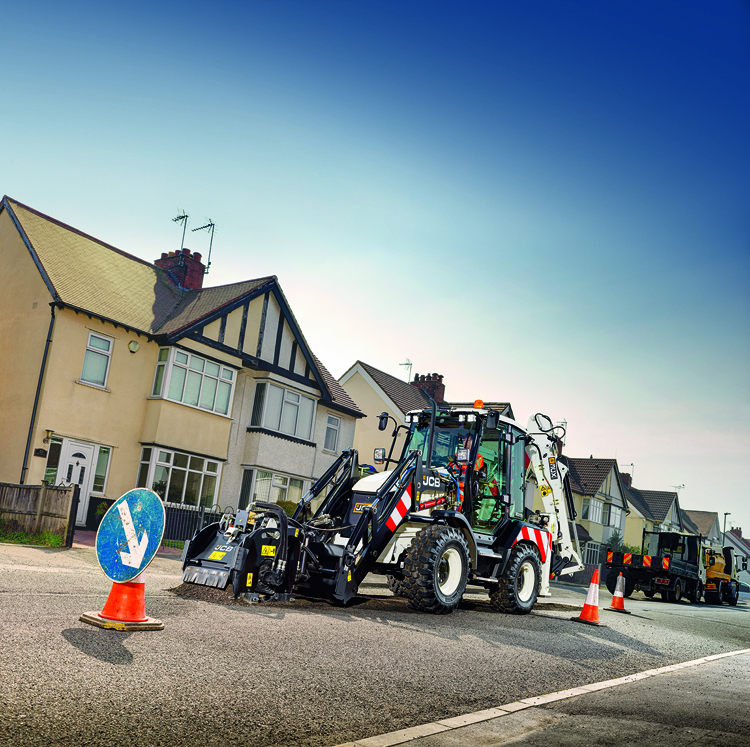
Whilst so much is changing in the construction plant sector, there are reassuring constants, and for JCB one of those is undoubtedly the backhoe loader. Whilst it might be the machine where it all began for the eponymous Joseph Cyril, it is by no means immune to a process of evolution, and the latest incarnation is the 3CX Compact Highways Master – a one machine solution for roads and highways maintenance.
Specifically designed to meet the needs of highway contractors, local councils and rental businesses, the unit is replete with red chevrons livery, and Chapter 8 safety decals. It is benefits from a skid steer loader quick hitch on the front loader arms and a SMART attachment integration system, to make it easy to carry out a range of tasks with buckets and a wide variety of specialist attachments.
The machine will offer customers a safer two-in-one road planing solution, as the only model on the market that can be readily deployed for road planing applications with a 300mm rear as well as a 600mm front planer attachment. Standard Powerslide side-shifting capability at the rear also allows the operator to mill a square patch without having to reposition the machine – an industry first feature enabling a cross cut within a single carriageway without requiring manual hand tools. In addition, depth control will improve operator accuracy and productivity.
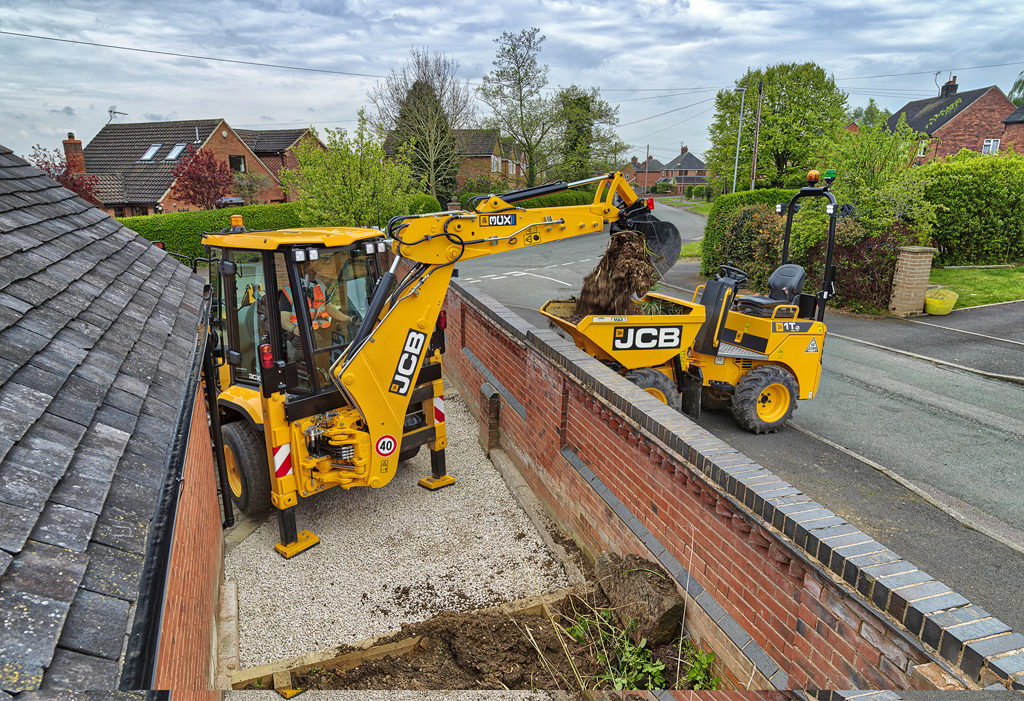
In addition to the Highways Master there are now two additional variants of the JCB 3CX Compact. At just 1.9 metres wide and 2.74 metres high, the machine is perfect for not only road resurfacing and repair contractors, but for the utilities, groundworkers and municipalities working in the confines of congested urban areas.
The new 3CX Compact PLUS and the 3CX Compact PRO are equipped with a number of new features, including, front Auxiliary Constant Flow (70 litres per minute on the PLUS and 120 1itres per minute on the PRO. Varispeed transmission enable travel speed to be set independently of hydraulic flow, and there’s a front skid steer quick hitch on these models as well. In addition, the new 3CX Compact PRO features a 7-way multifunction joystick.
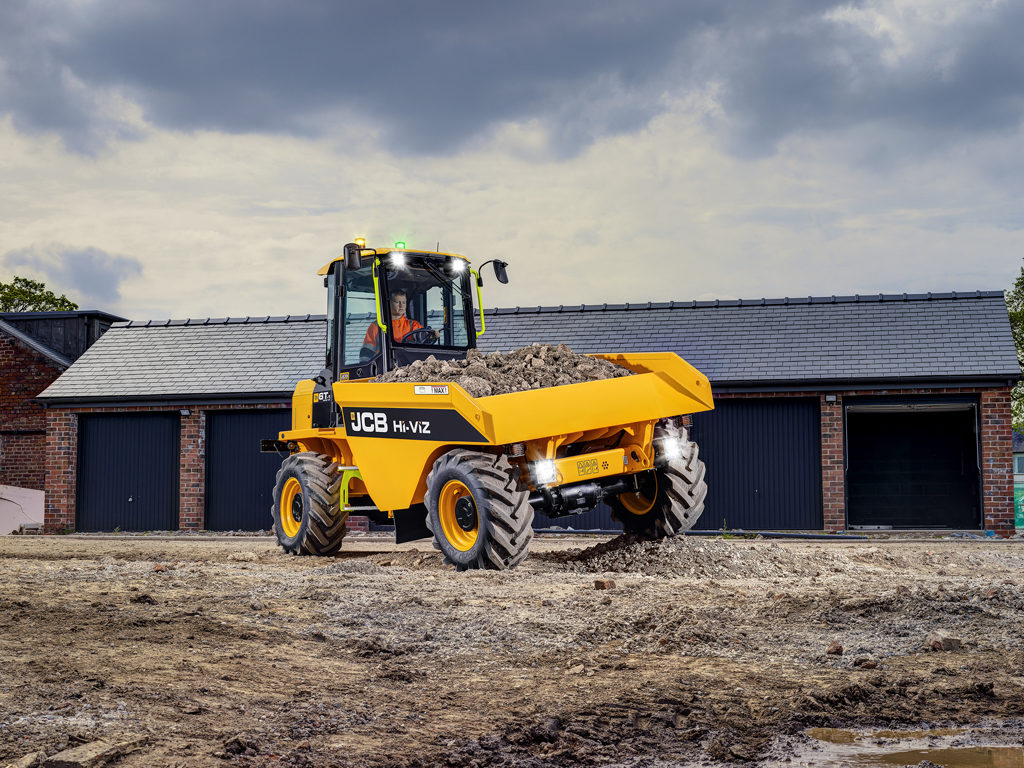
One class of machine that certainly has received considerable scrutiny over a drawing board has been the site dumper, with JCB’s Hi Viz concept now an established solution. This year will see the 7T model joined by a new sibling – the 6T Hi Viz. Just like the original in addresses the visibility issues associated with larger forward tipping dumpers. In fact, the operator can see a 1.4m high object at a distance of 1.0m from the machine when fully laden, and a 0.8m high object at 1.0m when unladen, far exceeding legislative requirements, all without the need for expensive cameras, sensors and additional mirrors.
Construction Plant News will be conducting further test drives of these, and other machines from the JCB stable in the future editions, with a more in-depth look at the Hydraload coming up in our September issue.

